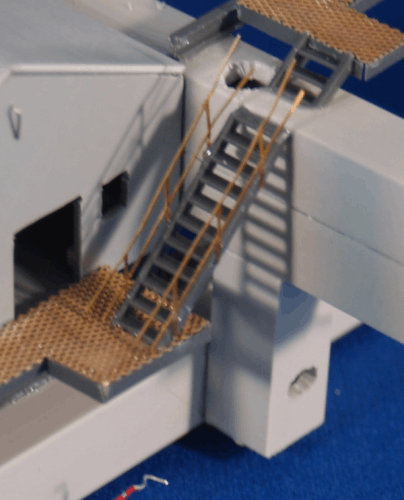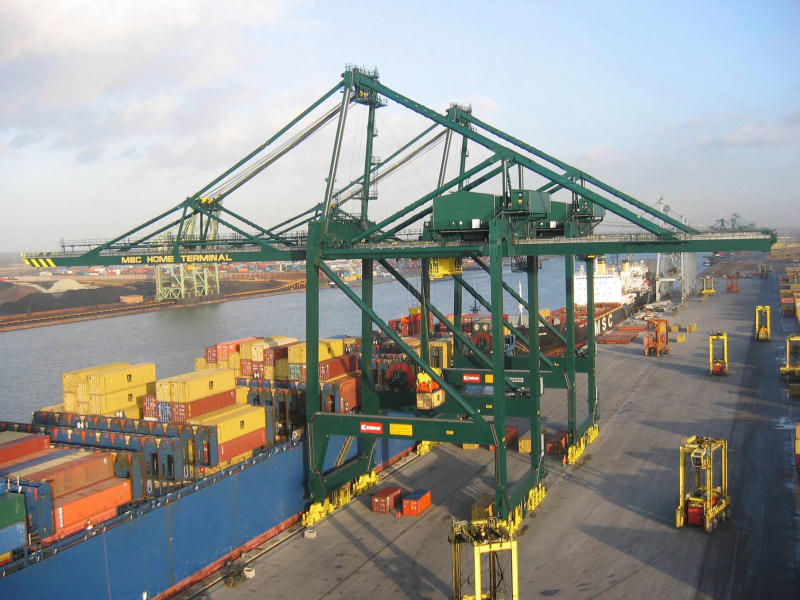
The Making of a container crane
Part 3 (including PDF files of the blue prints)
I am in the process of building a layout situated in the
San Francisco Bay Area. The semi-freelance layout will feature a container port,
serviced by Southern Pacific and the local Northwestern Pacific. I imagined that
the Northwestern Pacific never abandon the harbor in Tiburon and it eventually
grew in a modern container facility. Half of my layout will be devoted to the
harbor and I wanted a showcase piece that is not seen very often on model
railroad layouts. The container crane was the perfect structure. Although I have
been building models for more than thirty years, this would be my first
scratchbuild model. My main source for parts was the very helpful Plastruct
http://www.plastruct.com/
company that has a great web site that makes it easy to find all the
necessary parts. If you download the free pdf catalog, the search will be even
easier.
After spending 2 years on the internet finding information
and dimensions of a modern Post-Panamax (for larger ships that do not fit
through the

Picture copyrighted by Kalmar Industry, used with permission.
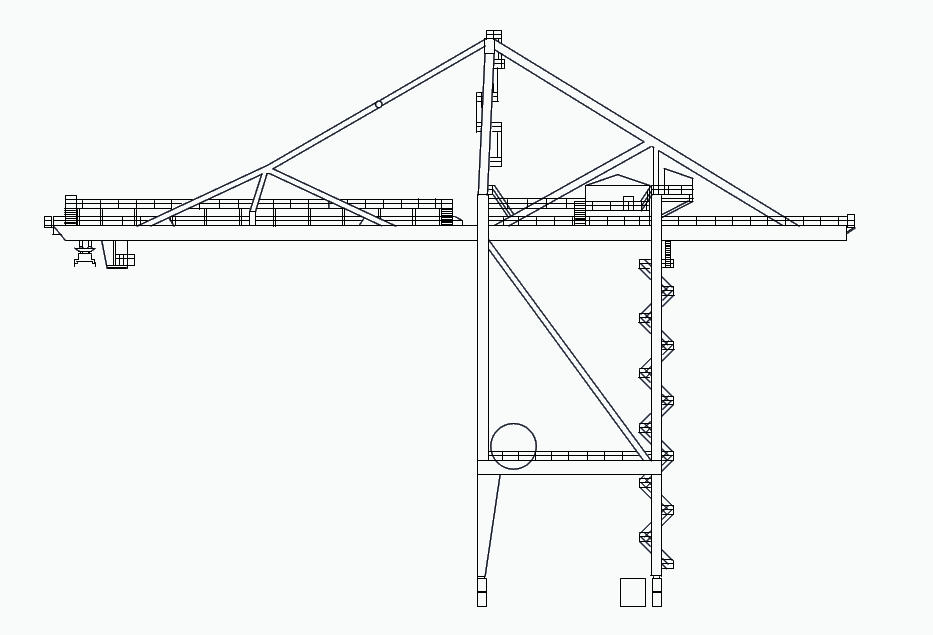
Using a drawing in one of
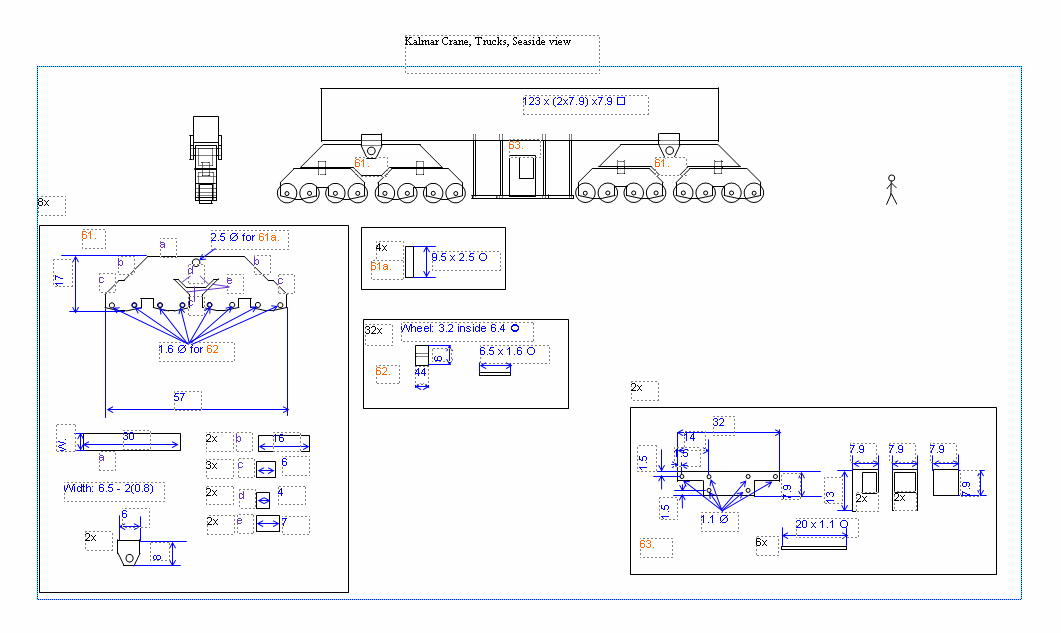
I ended up with 16 pages of drawings and 90 individual plastic and brass pieces.
I also determined the exact locations of the LED lights so I could put wires in the round and square tubing before I glued the pieces together.
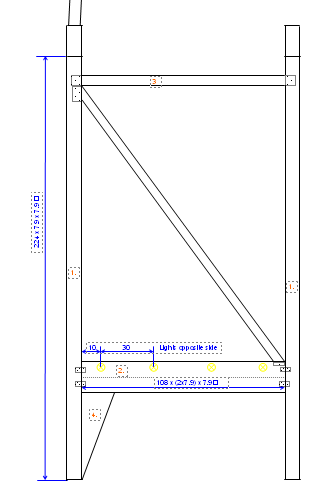
II used mostly tubing material since I could insert smaller tubing and used them as connectors.
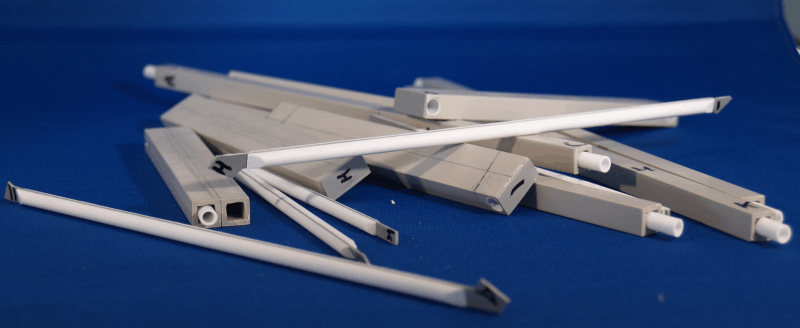
With the connectors I was able to
assemble the crane without gluing it together for test fit.
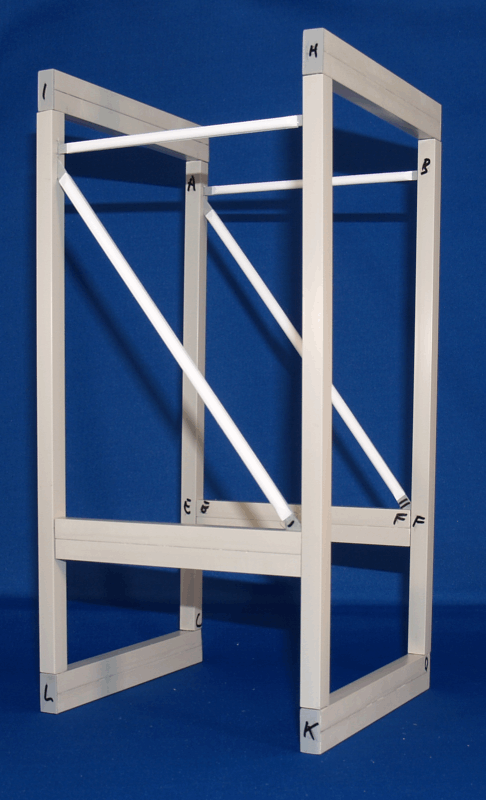
I used
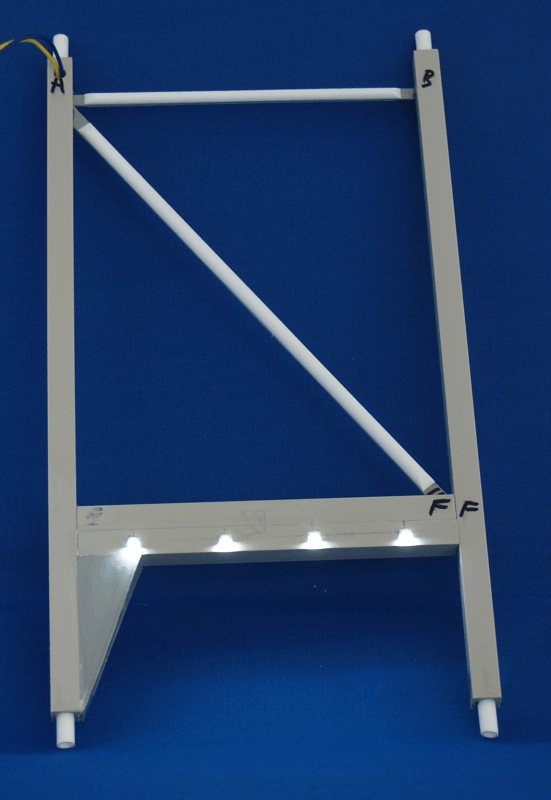
Although the
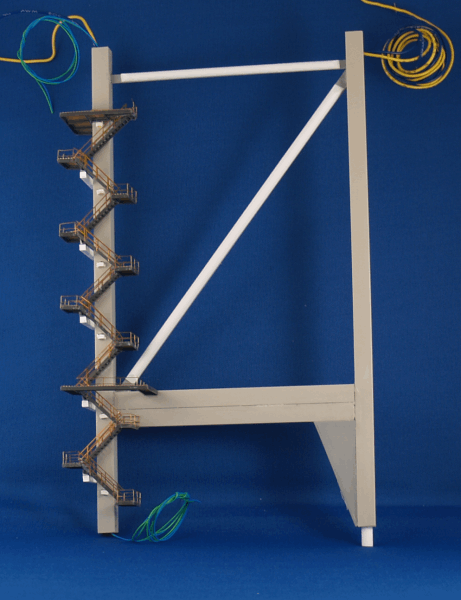
The stairs are a combination of Plastruct T
and L profiles and
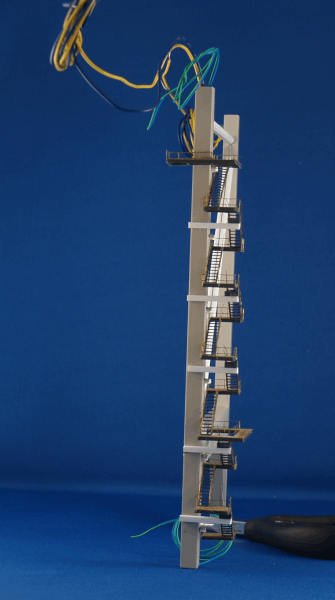
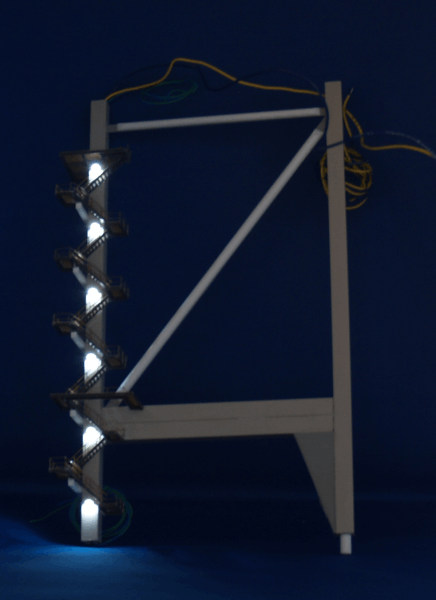
The next picture shows the different pieces of a walkway and staircase. The huge holes in the styrene profiles are for the wires from the battery (inside the building) to the lights and blinkers.
